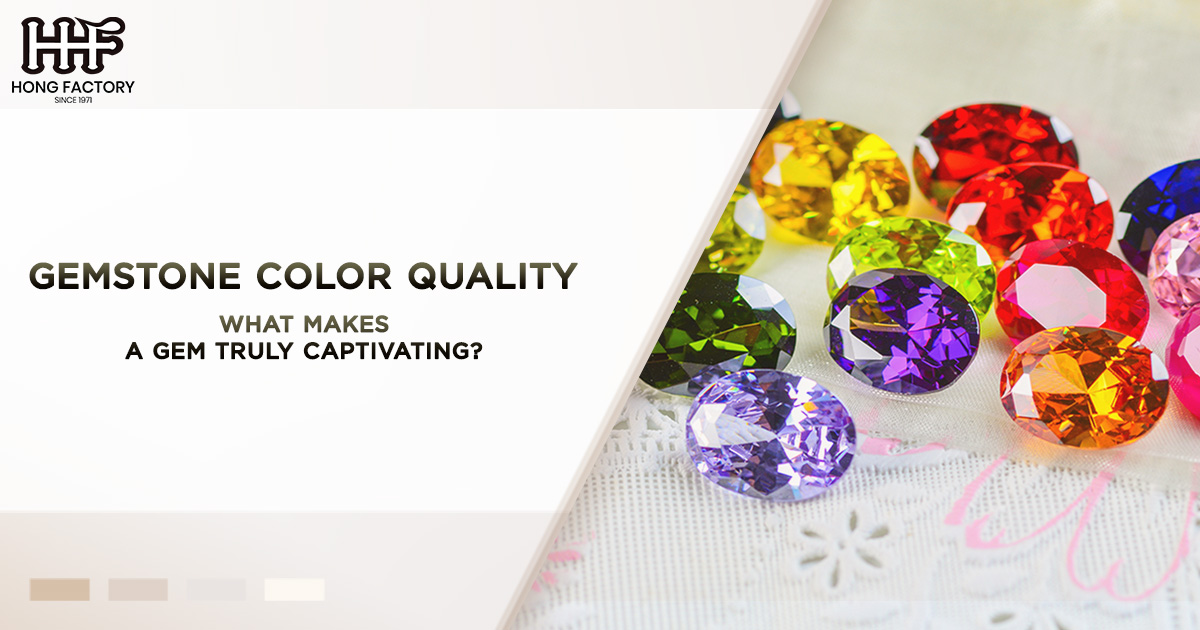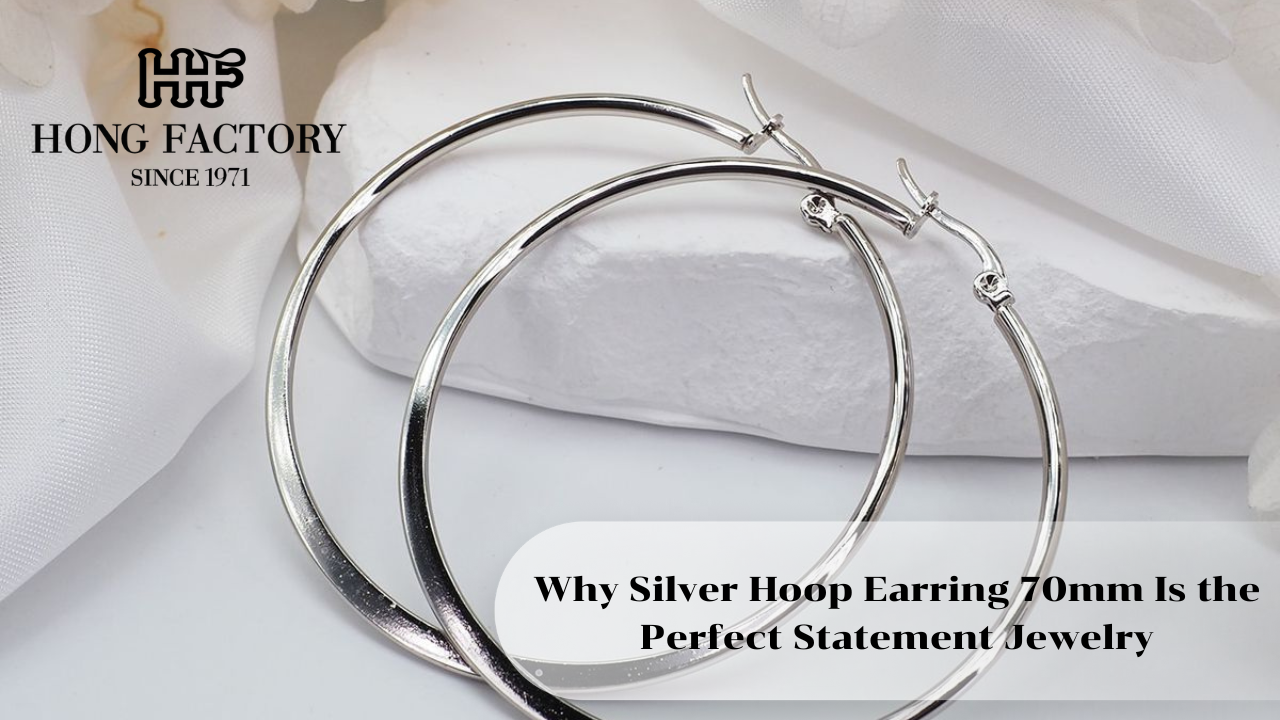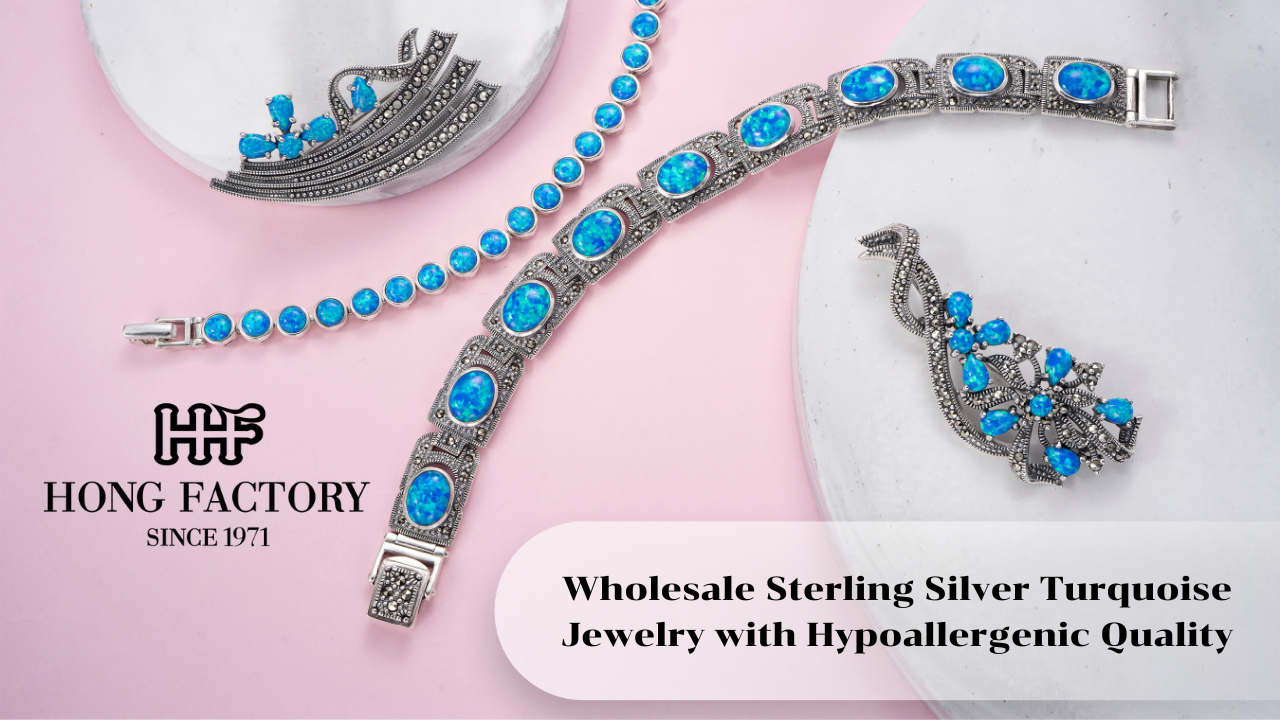When we think of gemstones, the first thing that usually comes to mind is their dazzling array of colors. From the deep red of rubies to the serene blue of sapphires and the enchanting green of emeralds, a gemstone’s color is undoubtedly one of its most defining features. But what makes a gemstone’s color truly captivating? Achieving this allure boils down to the intricate interplay of color grading, tone, and saturation. In this article, we’ll explore the factors that influence gemstone color quality, delve into grading systems, examine its impact on value, and uncover the role of light effects in the mesmerizing appearance of these natural treasures.
The Anatomy of Gemstone Color : Factors That Define Beauty
To understand gemstone color quality, it’s important to break down the three primary components that define color: hue, tone, and saturation.
1. Hue
Hue refers to the basic color of a gemstone. For instance, emeralds are green, rubies are red, and sapphires can be blue or other hues like pink and yellow. However, the specific hue within a color family can vary widely. A ruby might lean toward an orangey-red, while others exhibit a purplish-red hue. The preference for a particular hue is often subjective, but in general, pure and vivid hues are considered more desirable.
2. Tone
Tone describes the lightness or darkness of a gemstone’s color. The tone can range from very light to very dark. For example, a pastel pink sapphire would have a light tone, while a deep navy-blue sapphire would have a dark tone. The ideal tone for a gemstone depends on the type of stone and its market preferences. In most cases, medium to medium-dark tones are regarded as optimal because they showcase the richest color without appearing overly pale or too opaque.
3. Saturation
Saturation represents the intensity or vividness of a gemstone’s color. It is perhaps the most important factor in determining a gemstone’s overall color quality. Gems with high saturation appear vibrant and full of life, while those with low saturation might look dull, grayish, or washed out. For instance, a ruby with an intense red saturation commands significantly higher value than a ruby with weaker, less vivid coloring.
Together, these three factors—hue, tone, and saturation—form the foundation of gemstone color grading. Understanding how these elements interact is essential to evaluating a gemstone’s overall appeal.
Color Grading Systems : A Framework for Evaluating Quality
Gemstone color grading is a standardized way to assess and communicate color quality. Though grading methods vary by organization, most systems aim to address the three key factors of hue, tone, and saturation.
1. Gemological Institute of America (GIA) System
The GIA color grading system is one of the most widely recognized frameworks for evaluating gemstones. It categorizes color in terms of
- Hue : The predominant color of the gemstone. For example, a ruby might have a primary red hue with slight secondary undertones of orange or purple.
- Tone : Measured on a scale from very light to very dark, this assesses the gemstone’s depth of color.
- Saturation : This measures how pure or intense the color appears, with higher saturation being more desirable.
For instance, a sapphire graded as “strong blue” by the GIA would indicate a highly saturated and vivid color tone, which often translates to greater value.
2. World Jewelry Confederation (CIBJO) Standards
CIBJO also provides comprehensive guidelines on color grading using similar parameters. This system emphasizes descriptive language, such as “deep” or “vivid,” to describe hue and tone.
3. Trade-Specific Terminology
In addition to formal grading systems, the trade often uses terms like “pigeon’s blood red” (rubies) or “royal blue” (sapphires) for high-quality gems. While these labels lack scientific precision, they evoke imagery that resonates emotionally with buyers.
Whether employing a formal grading system or trade-specific labels, understanding color grading allows both experts and consumers to communicate and appreciate the quality of a gemstone’s color.
Value Impact : Why Color Matters More Than Almost Anything Else
The color of a gemstone has the most significant impact on its market value, often outweighing other factors such as carat weight, clarity, or cut. Buyers are typically attracted to gems with pure, vibrant, and consistent coloring. Let’s explore how color components affect price and desirability.
1. Hue and Market Preferences
Certain hues command a premium in the market due to their rarity and cultural significance. For example, a ruby with a pure “pigeon’s blood” red hue is far more valuable than one with brownish-red undertones. Similarly, a sapphire with a pure “cornflower blue” hue will fetch higher prices than stones with greenish or grayish tones.
2. The Role of Tone
While tone preferences vary, gemstones with medium to medium-dark tones are generally more sought after. A gemstone that is too light may appear washed out, while overly dark tones may mask its brilliance. Striking the right balance in tone is key to creating a visually captivating gem.
3. Saturation as a Game-Changer
Saturation is arguably the most critical factor influencing value. A gem with highly saturated color is more likely to leave a lasting impression on the viewer. For instance, emeralds with vivid saturation and minimal grayish undertones are considered top quality and can command astronomical prices.
Color quality not only impacts monetary value but also influences the wearer’s emotional response. Vibrant and balanced colors evoke a sense of luxury, beauty, and connection, making a gemstone truly captivating.
The Magic of Light : How Light Effects Enhance Color
The interaction between light and the gemstone’s material can dramatically influence how we perceive its color. Whether under natural or artificial lighting, a gemstone’s brilliance depends on its ability to manipulate light.
1. Light Refraction and Dispersion
Light refracts when it enters a gemstone, bending and splitting into its component colors. This dispersion creates the “fire” or sparkle within many gemstones, enhancing their visual impact. For example, a well-cut diamond owes its dazzling brilliance to its ability to refract light effectively. However, in colored gemstones, this effect can subtly shift tones, making the hue appear richer or brighter.
2. Pleochroism
Some gemstones, such as tanzanite and tourmaline, exhibit pleochroism—a phenomenon where they display different colors depending on the viewing angle. This optical effect adds depth and intrigue, making these stones especially captivating to collectors and enthusiasts.
3. Influence of Lighting Conditions
Light source plays a crucial role in how a gemstone’s color is perceived. For instance
- Incandescent light tends to emphasize warm tones, making red and orange gemstones appear more vibrant.
- Daylight brings out the true hues of most gemstones.
- Fluorescent lighting can make certain stones, such as rubies, appear less intense.
To truly appreciate a gemstone’s color quality, it’s essential to observe it under multiple lighting conditions to reveal its full spectrum of beauty.
Conclusion
A gemstone’s color quality is the heart of its beauty and value, with hue, tone, and saturation working together to create breathtaking allure. Grading systems provide a framework for evaluating these qualities, enabling experts and buyers to distinguish between exceptional and ordinary stones. Add to this the dynamic role of light effects, and every gemstone takes on a unique character that defines its charm.
When it comes to selecting gemstones, color grading, tone, and saturation should be your guiding principles. By understanding these factors, you’ll not only gain a deeper appreciation for the artistry of gemstones but also make informed choices when investing in these treasures of the earth. A truly captivating gemstone is one that combines the perfect balance of nature’s beauty and human expertise, leaving us spellbound with every glance.











